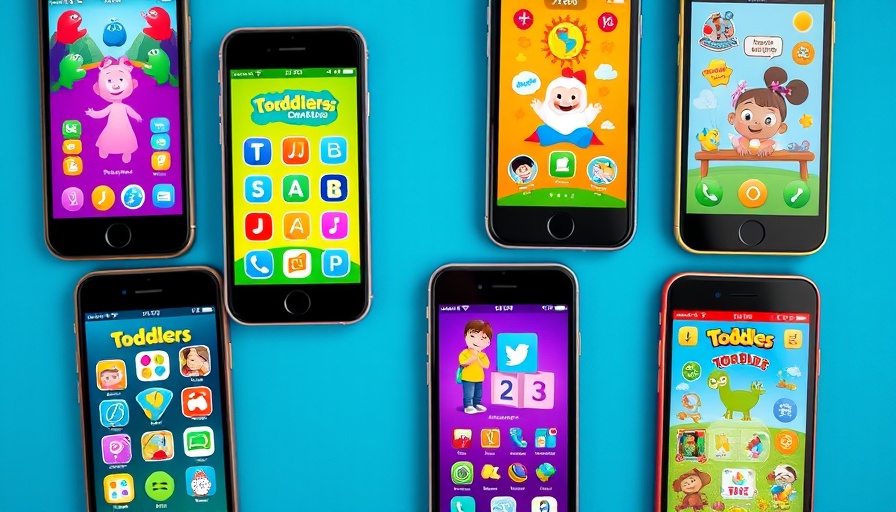
Finding Balance: Screen Time for Toddlers
In today’s fast-paced world, keeping toddlers away from screens can feel nearly impossible for parents. Juggling chores, work, and everyday parenting duties often necessitates solutions like screen time. However, with thoughtful choices, screen time can be both entertaining and educational. The American Academy of Pediatrics (AAP) suggests that media use for children aged under 18 months should be kept minimal, allowing video chats with family, while toddlers aged 18 months and older can engage with interactive apps on tablets or phones, always under parental supervision.
Best Educational Apps: Engaging and Fun
Many parents worry about the effects of screen time, yet some applications offer fantastic educational attributes alongside immense fun. As highlighted in Good Housekeeping, one of the standout options is PBS Kids Games. Suitable for ages 2 to 8, this free app hosts over 250 games related to popular shows featuring beloved characters like Elmo and Daniel Tiger. An underrated aspect of this app is its offline functionality—once downloaded, it works even without Wi-Fi, making it an ideal choice for long car rides or when connectivity isn’t reliable.
Similarly, Lingokids aims to teach kids new languages through interactive games. The platform offers a free trial, after which parents must decide if the subscription fee works for their family. This type of engagement reflects a shift towards hybrid learning, blending traditional methods with the convenience of digital tools.
The Philosophy Behind Toddler Screen Time
It's essential to remember that while educational apps can provide learning opportunities, the AAP recommends maintaining screen time to no more than one hour a day for preschool-aged children. This keeps them from missing out on crucial developmental milestones, such as in-person interactions and physical activity.
Jenny Radesky, a pediatrician and AAP expert, emphasizes that high-quality content can contribute positively to child development. Therefore, parents should consider prioritizing apps that offer a mix of creative engagement and educational value rather than simply allowing their children to engage with any screen.
Tips for Using Toddler Apps Wisely
As you explore the world of toddler apps, it’s vital to curate experiences that enhance your child’s learning rather than detract from it. Here are a few actionable tips for parents:
- Co-Play: Join your toddler during app usage. Discuss the content, ask questions, and make it interactive. This interaction fosters deeper understanding and connection.
- Limit Exposure: Set clear rules regarding screen time. Use apps as a reward system or a treat during travel to keep usage manageable.
- Prioritize Quality: Select educational apps recognized by experts, ensuring that they are beneficial rather than just entertaining. Often, simple apps that encourage creative thinking or problem-solving yield the best results.
Parental Control: Keeping Kids Safe
With the increasing reliance on apps, understanding parental controls becomes crucial. Many platforms offer settings that allow parents to restrict usage, monitor activity, and even filter content. Make sure to explore these features to create a safe digital environment for your toddler.
Finding the right balance of screen time is essential for a child’s development. By selecting high-quality educational apps and engaging actively with your child, you can turn what might seem like a simple escape into a valuable learning experience. Parents, remember: while technology can be a great ally, it is the moments spent together that ultimately shape your toddler's growing mind.
Take Action! As you navigate the digital landscape for your little ones, consider downloading a couple of highly rated toddler apps today. Experiment with interactive learning, and enjoy the educational journey alongside your child!
 Add Row
Add Row  Add
Add 




Write A Comment